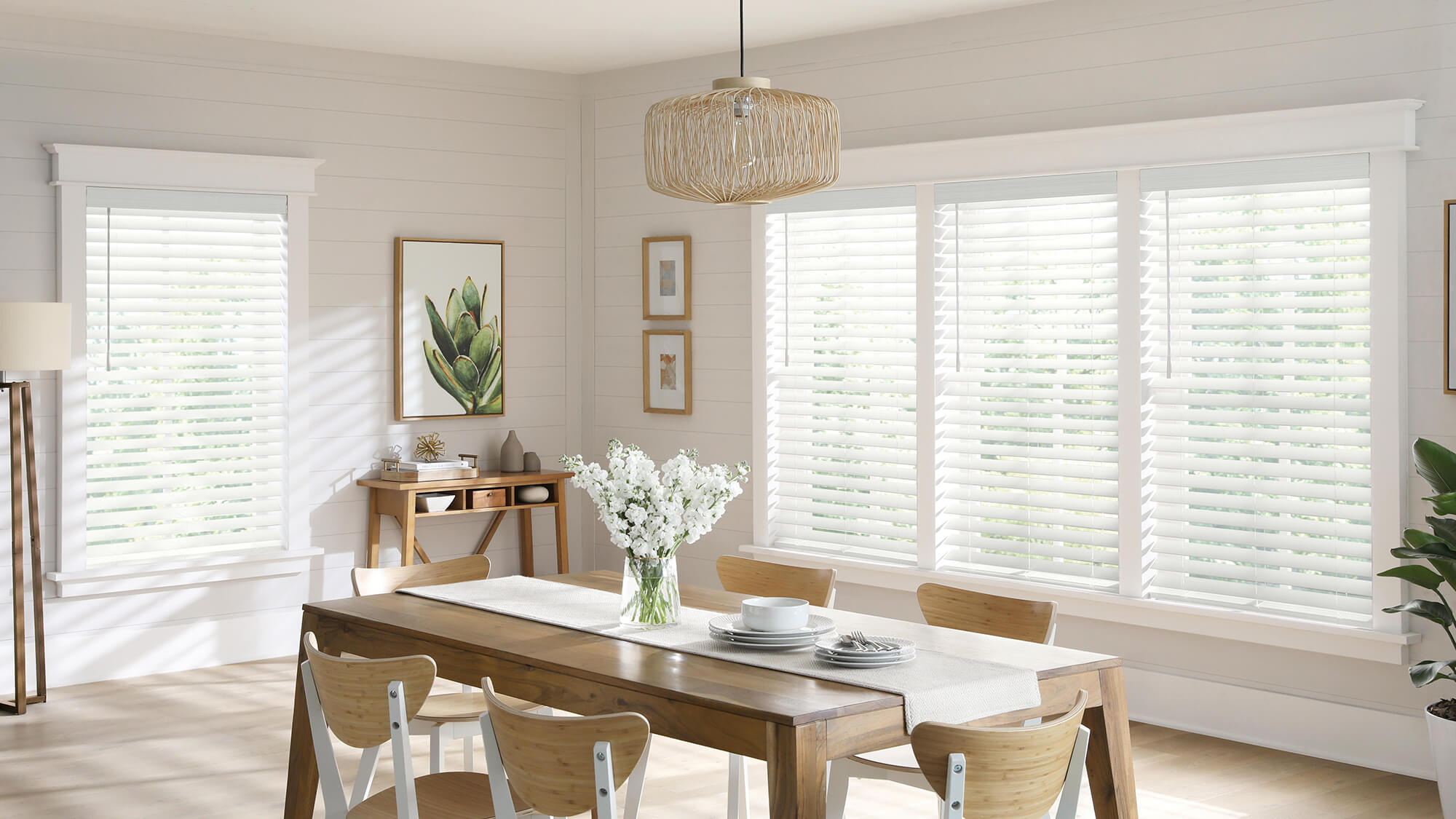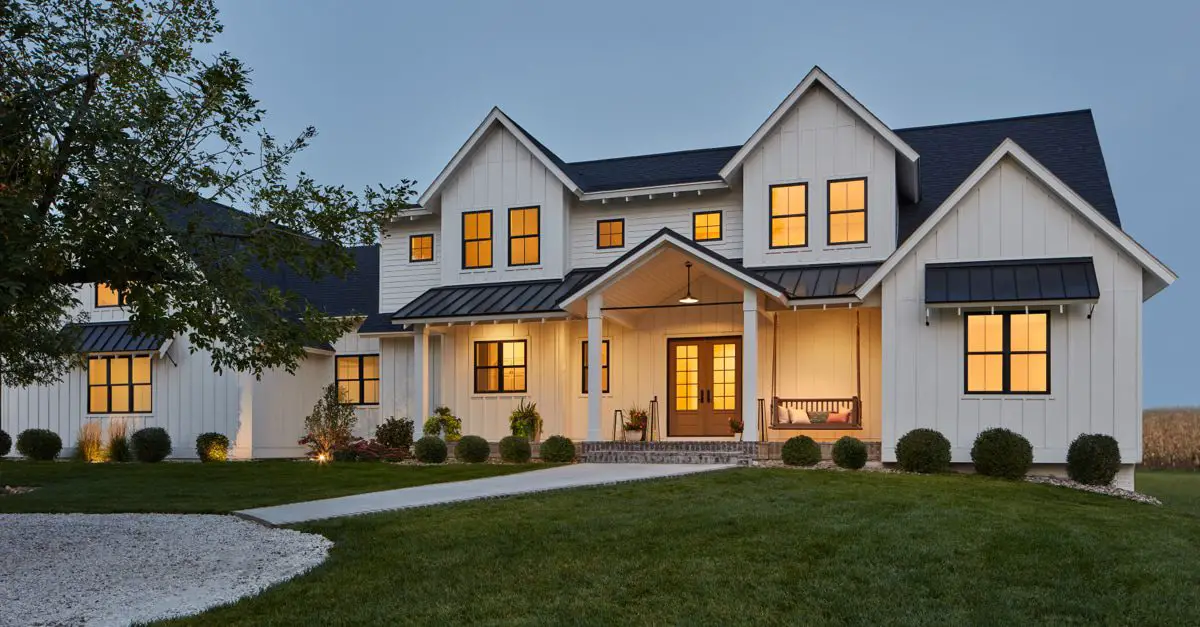Window Frame Weatherproofing Strategies: Ultimate Guide

Window frame weatherproofing strategies are essential for ensuring the integrity and efficiency of your windows. Implementing effective weatherproofing techniques can help prevent drafts, improve insulation, and ultimately save energy and reduce heating and cooling costs.
To protect your windows from the elements, consider using weatherstripping, caulking, and insulated window coverings. These measures can help seal gaps and cracks, minimize air leakage, and enhance thermal performance. Additionally, replacing old or damaged window frames and using energy-efficient glass can further enhance weatherproofing efforts.
Investing in these strategies will not only enhance the comfort and energy efficiency of your home but also prolong the lifespan of your windows.
Importance Of Weatherproofing For Window Frames
Window frame weatherproofing is essential for protecting your home from moisture, drafts, and energy loss. Effective strategies like caulking, insulation, and proper maintenance ensure that your windows stay durable and efficient, saving you money on heating and cooling bills.
Weatherproofing your window frames is essential for maintaining the overall integrity and performance of your windows. By creating a barrier against external elements, such as rain, wind, and extreme temperatures, weatherproofing helps to ensure optimal protection for your home or building.
It offers several benefits that not only enhance energy efficiency but also contribute to improved comfort, indoor air quality, and the longevity of your window frames.
Benefits Of Weatherproofing Window Frames:
- Improved energy efficiency: Weatherproofing your window frames helps to minimize air leakage and drafts, preventing unwanted heat loss during the winter and heat gain during the summer. This, in turn, reduces the strain on your HVAC system and can result in substantial energy savings.
- Enhanced comfort and indoor air quality: By effectively sealing your window frames, weatherproofing prevents outside air from infiltrating your home or building. This helps maintain a consistent indoor temperature, making your space more comfortable year-round. Additionally, weatherproofing minimizes the entry of dust, pollen, and outdoor pollutants, improving indoor air quality.
- Increased lifespan of window frames: Weatherproofing acts as a protective shield for your window frames, safeguarding them against moisture, humidity, and other damaging elements. By preventing water infiltration, weatherproofing reduces the risk of rot, decay, and mold growth, ultimately prolonging the lifespan of your window frames.
Remember, weatherproofing your window frames is a worthwhile investment that offers both immediate and long-term benefits, including improved energy efficiency, enhanced comfort, and increased durability. By taking the necessary steps to weatherproof your windows, you can enjoy a more comfortable and cost-effective living or working environment.
Identifying Potential Leaks And Drafts
Upgrade your window frame weatherproofing with effective strategies to identify potential leaks and drafts. Keep your space cozy and energy efficient by addressing these issues.
Inspecting Window Frames For Leaks And Drafts:
When it comes to weatherproofing your windows, it is crucial to identify potential leaks and drafts. By understanding where these issues are originating from, you can take appropriate actions to seal and insulate your window frames effectively. Here are some strategies to help you inspect your window frames for leaks and drafts:
- Visual examination:
- Look for visible gaps or cracks around the perimeter of the window frame.
- Check for any signs of peeling paint or deteriorated caulk.
- Inspect the corners of the frames for openings or separations.
- Examine the condition of the window glazing or sash putty.
- Use of thermal imaging technology:
- Utilize a thermal imaging camera to identify temperature inconsistencies around the window frame.
- Cold spots captured by the camera can indicate air leaks or poor insulation.
- Thermal imaging can provide a visual representation of the problem areas, making it easier to pinpoint leaks and drafts.
- Feeling for drafts:
- Place your hand near the edges of the window frame and slowly move it around.
- Pay attention to any noticeable changes in temperature or drafts.
- Drafty areas may feel cooler or have airflow on the back of your hand.
By following these strategies, you can conduct a comprehensive inspection of your window frames and identify any potential leaks and drafts. Remember to address these issues promptly to improve energy efficiency and keep your home comfortable.
Sealing Techniques For Window Frames
Window frame weatherproofing strategies include various sealing techniques that effectively prevent air and water leakage. From applying caulk and weatherstripping to using foam sealants and replacing old gaskets, there are numerous methods to ensure a tight and energy-efficient seal around window frames.
Window Frame Weatherproofing Strategies
Windows are an essential part of our homes, providing natural light, ventilation, and a view of the outside world. However, if not properly sealed, they can also be a significant source of heat loss, drafts, and unwanted noise. This is where weatherproofing techniques come into play.
In this section, we will discuss the different sealing techniques for window frames to ensure maximum energy efficiency and comfort in your home.
Caulking
Caulking is a common and effective method to seal gaps and cracks around window frames. It helps to prevent air and moisture infiltration, improving the overall insulation of your windows. Here are a few important points to consider when it comes to caulking:
- Choosing the right caulk: Select a high-quality caulk that is specifically designed for exterior use. Look for one that is flexible, durable, and weather-resistant. Silicone and acrylic latex caulks are popular choices for window frame sealing.
- Preparing the window frame: Before applying caulk, it is crucial to clean and dry the area thoroughly. Remove any old caulk or paint using a scraper or caulk remover. Ensure that the surface is free from dust, debris, and loose materials.
- Applying caulk effectively: Start by cutting the tip of the caulk tube at a 45-degree angle to get a small opening. Use a caulk gun to apply an even bead of caulk along the gaps and cracks in the window frame. Smooth the caulk with a caulk finishing tool or your finger to create a neat and seamless finish. Be sure to work in small sections to prevent the caulk from drying too quickly.
Weatherstripping
In addition to caulking, weatherstripping is another effective technique to seal gaps and improve the energy efficiency of your windows. Weatherstripping materials act as a barrier, preventing air leakage and reducing drafts. Consider the following points when it comes to weatherstripping:
- Types of weatherstripping materials: There are several types of weatherstripping materials available, including adhesive-backed foam tape, V-strip, door sweeps, and felt strips. Choose the most suitable material based on the size and location of the gaps in your window frames.
- Installing weatherstripping for different window frame materials: The installation method may vary depending on the material of your window frame. For wooden frames, you can nail or staple the weatherstripping in place. Adhesive-backed weatherstripping works well for metal or vinyl frames. Measure and cut the weatherstripping precisely to ensure a snug fit.
Common Mistakes To Avoid
While weatherproofing your window frames, it is important to avoid common mistakes that could compromise the effectiveness of your efforts. Here are a few pitfalls to steer clear of:
- Overlooking gaps and cracks: Pay attention to even the smallest openings in your window frames. Even a tiny gap can significantly impact the energy efficiency of your windows.
- Using improper sealant or caulk: Be sure to select the appropriate sealant or caulk for your specific needs. Using the wrong type may lead to poor adhesion and durability.
- Neglecting regular maintenance: Weatherproofing is not a one-time task. Regularly inspect your windows and reapply caulk or weatherstripping as needed to maintain their effectiveness.
Sealants And Adhesives
In addition to caulking and weatherstripping, sealants and adhesives can be used for specific weatherproofing needs. Here are a few key points to consider when using sealants and adhesives:
- Selecting the appropriate sealant: Depending on the purpose, choose a sealant that is suitable for outdoor use, such as silicone for sealing gaps around window frames or adhesive for securing weatherstripping. Consider factors like weather resistance, flexibility, and durability.
- Proper application techniques: Follow the manufacturer’s instructions for applying sealants and adhesives. Use a caulk gun or a putty knife to apply the sealant evenly. Ensure that the surfaces are clean and dry before application.
By employing these sealing techniques, you can enhance the energy efficiency of your windows and create a more comfortable living environment. Remember, the key is to choose the right materials, follow proper installation techniques, and pay attention to regular maintenance for long-lasting and effective results.
Insulating Window Frames
Insulating window frames is a key strategy for weatherproofing your home. It helps to prevent drafts and keep the interior comfortable, while also reducing energy costs. With proper insulation, you can create a more efficient and sustainable living environment.
Insulating your window frames is an effective strategy to enhance the energy efficiency of your home and reduce energy costs. By creating a thermal barrier, insulation helps to prevent heat transfer and minimize drafts. Whether you opt for a do-it-yourself approach or hire a professional, proper insulation coverage is crucial.
Let’s dive into the different aspects of insulating window frames:
Adding Insulation To Window Frames
Insulating window frames involves the process of sealing gaps and cracks around the frames to prevent air leakage. Here are some common methods to add insulation:
- Weatherstripping: This involves applying adhesive-backed foam tape or V-strip to the window sash or frame to seal gaps and improve insulation.
- Caulking: Using silicone or acrylic caulk, seal gaps between the window frame and wall to prevent air infiltration. Remember to remove any old caulk before applying a new bead.
- Spray foam insulation: This expanding foam can be used to fill larger gaps and cavities around the window frames. It provides excellent air sealing properties and insulation.
- Window insulation film: Applying a clear plastic film to the window glass can help create an additional layer of insulation by trapping air between the film and the window.
Types Of Insulation Materials
When it comes to insulating window frames, various insulation materials can be used. The choice depends on factors such as cost, durability, effectiveness, and personal preference. Here are some common types of insulation materials used for window frames:
- Fiberglass insulation: These pre-cut strips or rolls of fiberglass can be placed around the window frames to block drafts and provide thermal insulation.
- Foam insulation tape: These self-adhesive foam tapes are easy to install and provide an airtight seal around window frames.
- Low-expansion spray foam: This type of spray foam expands less than regular spray foam, making it ideal for filling narrow gaps and cracks.
Diy Vs Professional Installation
Deciding whether to tackle window frame insulation yourself or hire a professional installer depends on your comfort level, time availability, and the complexity of the job. Consider the following points when making your decision:
- DIY installation: If you enjoy DIY projects and have basic handyman skills, you can save money by insulating the window frames yourself. However, keep in mind it may require more time and effort.
- Professional installation: Hiring a professional ensures proper installation and saves you the hassle. They have the necessary expertise and equipment to tackle the job efficiently.
Ensuring Proper Insulation Coverage
Proper insulation coverage is essential for optimal energy efficiency and insulation performance. Here are a few tips to ensure complete coverage:
- Thoroughly inspect the window frames for gaps, cracks, and air leaks before starting the insulation process.
- Clean the frames and remove any dirt, debris, or old caulking to ensure a smooth surface for effective insulation.
- Measure and cut insulation materials accurately to fit the specific dimensions of each window frame.
- Apply the chosen insulation materials, such as weatherstripping, caulking, or spray foam, ensuring a tight seal and complete coverage around the frames.
Remember, a well-insulated window frame not only keeps your home comfortable but also contributes to energy savings. Choose the insulation method and materials that best suit your needs and ensure proper installation for optimal results.
Upgrading Window Frame Materials For Improved Weatherproofing
Upgrade window frame materials to enhance weatherproofing and protect your home. Learn effective strategies for improved insulation and durability, ensuring a comfortable and energy-efficient living environment.
Considering Alternative Window Frame Materials:
Window frame materials play a crucial role in maintaining a weatherproof barrier for your home. Upgrading to more durable and energy-efficient materials can significantly enhance your window’s performance. Here are three alternative window frame materials to consider:
Vinyl Frames:
- Vinyl frames have gained immense popularity due to their affordable price and exceptional insulation properties.
- These frames are highly resistant to heat transfer, making them an excellent choice for homeowners seeking energy efficiency.
- Vinyl frames require minimal maintenance and are resistant to rot, corrosion, and fading, providing long-lasting durability.
Fiberglass Frames:
- Fiberglass frames offer a blend of strength, durability, and energy efficiency, making them a superior choice in extreme weather conditions.
- These frames have excellent insulation properties and do not expand or contract with temperature changes, reducing the risk of air and water infiltration.
- Fiberglass frames are low-maintenance, can be easily painted to match your home’s aesthetics, and have a longer lifespan compared to traditional materials.
Composite Frames:
- Composite frames combine the benefits of different materials, such as wood fibers and PVC polymers, to create a durable and weather-resistant window frame.
- These frames offer the natural beauty of wood with enhanced resistance to rot, moisture, and insect damage.
- Composite frames are energy efficient, provide excellent insulation, and require minimal upkeep, ensuring long-term weatherproofing for your windows.
By considering alternative window frame materials such as vinyl, fiberglass, and composite frames, you can improve the weatherproofing capabilities of your windows while enjoying other benefits like energy efficiency and durability. Choose the material that best suits your needs and budget to create a more comfortable and protected living environment.

Credit: www.rubcorp.com
Maintaining Window Frame Weatherproofing
For effective window frame weatherproofing, employ smart strategies like sealing gaps with weatherstripping, applying caulking to prevent drafts, and using window films for added insulation. With these techniques, you can ensure the longevity and efficiency of your windows in all weather conditions.
Regular Inspection And Maintenance:
- Regularly inspect your window frames for any signs of damage or wear.
- Look for cracks, gaps, or rot that may compromise the weatherproofing.
- Leaks or drafts are indicators that your window frames need attention.
- Address any issues promptly to prevent further damage.
Cleaning Window Frames:
- Keep your window frames clean by regularly removing dirt and debris.
- Use a gentle cleanser and a soft cloth to avoid scratching the frames.
- Pay attention to the corners and crevices where dirt can accumulate.
- Clean both the interior and exterior surfaces of your window frames.
Checking For Wear And Tear:
- Look for signs of weathering on your window frames.
- Check for peeling paint or discoloration, which may indicate moisture damage.
- Inspect the window sashes and tracks for smooth operation.
- Address any wear and tear promptly to maintain optimal weatherproofing.
Reapplication Of Sealants:
- Inspect the existing sealants on your window frames.
- If the sealants are cracked or deteriorated, it’s time for reapplication.
- Remove the old sealant and ensure the surface is clean and dry.
- Apply a new layer of sealant, following the manufacturer’s instructions.
Maintaining proper window frame weatherproofing is crucial for the longevity and energy efficiency of your windows. By regularly inspecting and maintaining your window frames, cleaning them thoroughly, checking for signs of wear and tear, and reapplying sealants as needed, you can ensure that your windows are properly protected from the elements.
Remember to address any issues promptly to avoid further damage.
Frequently Asked Questions Of Window Frame Weatherproofing Strategies
How Do You Weatherproof A Window Frame?
To weatherproof a window frame, follow these steps: 1. Clean the frame and remove any debris or peeling paint. 2. Apply a bead of caulk around the frame to seal any gaps or cracks. 3. Install weatherstripping along the edges of the frame to create a tight seal.
4. Consider adding storm windows or using window film for extra insulation and protection.
What Is The Best Weatherproofing For Windows?
The best weatherproofing for windows is sealing them with caulk, applying weatherstripping, and using window film.
What Are The Benefits Of Weatherproofing Window Frames?
Weatherproofing window frames can improve energy efficiency, prevent drafts, reduce noise pollution, and protect against moisture damage. It also helps extend the lifespan of your windows and lowers your heating and cooling costs.
How Can I Weatherproof My Window Frames?
To weatherproof your window frames, you can use caulking or weatherstripping to seal any gaps, check for and repair any damaged or deteriorating wood, use window film or window insulation kits, and install storm windows or window coverings for added protection.
Conclusion
Implementing effective window frame weatherproofing strategies is crucial for maintaining a comfortable and energy-efficient home. By sealing gaps and cracks, using weatherstripping and caulking, and applying insulating window films, you can significantly enhance the insulation of your windows and reduce energy loss.
Additionally, choosing high-quality materials and conducting regular maintenance will ensure long-lasting weatherproofing results. Remember to consider the specific climate conditions in your area and adapt your strategies accordingly. Taking these steps will not only improve the comfort of your living space but also help you save on heating and cooling costs.
So, don’t wait any longer—start weatherproofing your window frames today and enjoy the benefits of a well-protected and energy-efficient home.





